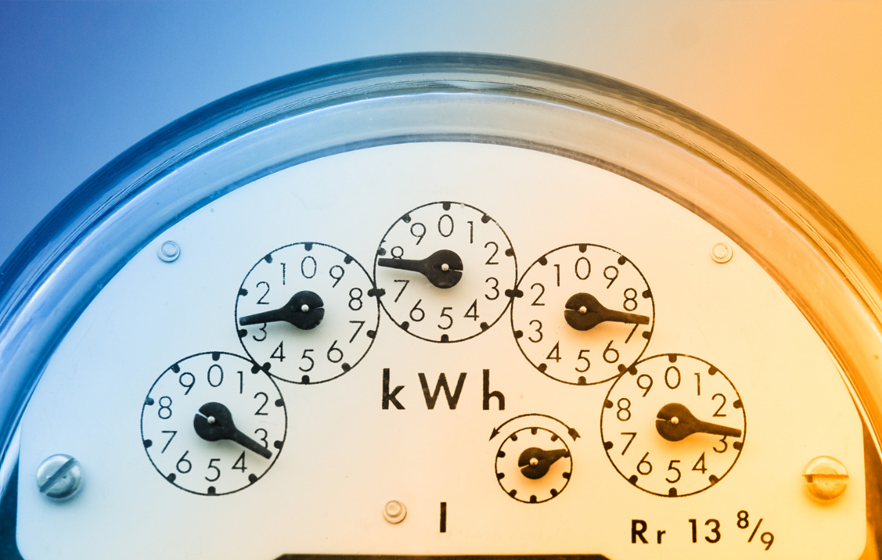
Before making the decision to get solar panels for their home, it is beneficial for homeowners to learn as much about solar power as possible. For instance, you may want to explore answering this question: "How much energy does a solar panel produce?"
How Solar Panels Work
Solar panel installation for homes has increased significantly in recent years. According to the U.S. Energy Information Administration (EIA), demand rose from 2.9 gigawatts in 2020 to 3.9 gigawatts in 2021 . But how do these systems work? In layman's terms, solar energy is created when sunlight hits photovoltaic panels that make up your system.
Solar panels are a great way to reduce your reliance on non-renewable energy sources, like fossil fuels. Solar cells convert the sun's energy into electricity, which can then be used in your home or business. The amount of electricity produced by solar panels depends on a few factors.
How Much Power Does a Solar Panel Produce?
Solar panels generate electricity, which is measured in watts. The number of watts a panel produces depends on various factors, such as the quality of the solar cells, how many sunlight hours it receives daily and monthly, and whether there are any obstructions blocking the sun (e.g., trees or buildings). Most home solar panels have a wattage between 250-400 but some commercial ones can produce up to 750-850 kilowatts per hour annually.
The amount of solar energy a panel produces is not always constant; it depends on the power output of the panel as well as how many peak sun hours there are where the solar power system for your home is located. Use this starting information from the manufacturer to make an estimate for your home.
How To Determine The Exact Amount Of Energy A Solar Panel Creates
How do you figure out how many watts a solar panel produces? "Watts" is the amount of power a panel should make under optimal sunlight, temperature and other conditions. To calculate wattage production, take the solar panel's output and multiply by your area's peak sun hours daily:
Kilowatt-hours (kWh) = (Hours of sunlight x Watts)/1,000
For example, if you get 6 hours of direct sunlight every day, multiply that by the wattage of a manufacturer's panel, such as 300 watts.
Kilowatt-hours (kWh) = (6 hours x 300 watts)/1,000
In this case, the number of kilowatt-hours produced would be 1.8 kWh. Next, calculate the following for the number of kWh per year using the following formula:
(1.8 kWh/day) x (365 days/year) = 657 kWh per year
If this solar panel works as efficiently as it should, then it will generate 657 kWh of power output per year.
What determines how much power a solar panel generates?
Solar panel size, peak sunlight hours, solar panel efficiency and physical obstructions are only a few of the multiple factors that affect how much energy your solar panels will generate.
- Solar Panel Size:The size of a solar panel can change how much solar energy it produces. The amount of electricity produced by a panel is also decided by the number of cells inside it. Most panels have 60 or 72 cells, but usually, 72 cell panels create more power.
- Peak Sunlight Hours:The hours of the day with the most sun are vital in solar energy production because they help you calculate how much intense sunlight you get and consequently can show you approximately how much electricity your solar panels will generate.
- Solar Panel Efficiency:The amount of energy that solar panels produce is dependent on its efficiency levels. "Monocrystalline” and “polycrystalline" are two different types of solar panels, for example – monocrystalline solar cells use single-crystal silicone to create thin, efficient material.
- Lack of Physical Obstructions:How much power might you produce if you have a lot of trees over your house or other obstructions? Naturally, the answer to "how much power can a solar panel generate?" will depend on the amount of sunlight that can get through to your solar panels.
Polycrystalline solar cells have lower efficiency than monocrystalline solar cells and are less expensive to produce. Typically, manufacturers melt silicon crystals together to create polycrystalline cells; however, this process means that electrons move less freely. In contrast, monocrystalline cells boast an efficiency rating of 15% – 20%.
Solar Panel (Frequently Asked Questions)

How Much Power Does a Solar Panel Produce in a Day?
A single solar panel from a solar panel system will generally produce about 2 kWh per day. But, the amount of electricity produced by one panel can differ based on various conditions.
How Much Does a Solar Panel Cost?
The cost of solar panels differs based on the type of solar panel. Monocrystalline panels, for example, are $1 – $1.50 per watt, while polycrystalline ones cost only $0.90 - $1.
How Many Solar Panels Does an Average Home Need?
The amount of solar panels you need to provide enough electricity varies depending on different factors such as your energy consumption, panel wattage and climate. You can figure out how many solar panels will power your home by taking these things into account.
How Can I Increase My Homes Solar Efficiency?
If you want to increase the efficiency of your home's solar panels, there are a few things you can do, such as buy a high-efficiency system and place it in an ideal sunny spot. Additionally, keeping the panels clean will also help produce more energy.
Conclusion
The amount of electricity solar panels produce depends on a few conditions, such as solar panel size, peak sunlight hours and physical obstructions. Two homes can have entirely different production rates based on these varying factors.

